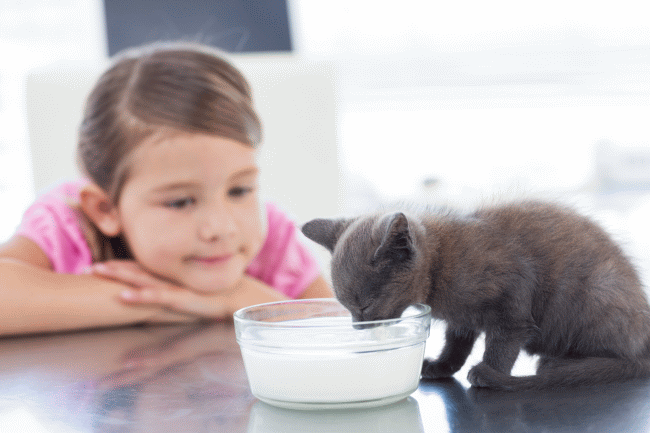
Cats can be persnickety eaters. But making sure a feline receives the proper nutrients is up to the pet not the cat. From overfeeding with certain products to underfeeding with others, here are some of the many mistakes pet owners make in food department. Read these reminders of what not to do when you are dishing up dinner for your furry feline.
Meal Time Mistakes Pet Owners Make
Mixing cat and dog food. There is a reason these products are marketed differently; a feline’s nutritional requirements differ from that of a dog’s. For example, a cat requires a higher amount of protein and taurine, that is seldom found in the contents of canine kibbles. Also, cats tends to suffer from dehydration more often than dogs, and constantly consuming dry dog food can cause health problems for a feline over time.
Feeding near a litter box. Just as distasteful as enjoying a 3-course meal in a bathroom might sound to you, most cats do not enjoy eating dinner next to their litter boxes. Even if space in your home might be cramped, try to keep these two necessary areas separated.
*NOTE: Cats also prefer not to share their food bowls with other kitties, so if one pet is having difficulty eating, try feeding him at a separate time from the others, or in his own space. Cats generally prefer privacy and solitude when it comes to meals.
Loud noises or clanging food dishes. Tin bowls, or clattering dishes can deter a cat from eating. This happens especially if he is in a particularly ornery mood, or has an ailment making him more sensitive to loud noises and general discomfort. Either place food & water bowls on a towel/spongey mat, or chose rubber or plastic dishes.
Only providing dry foods. Just as humans thrive with a varied diet, cats should eat different kinds of foods on rotation. Canned foods have more moisture and help protect from dehydrating dry foods cause. Whole foods (such as unseasoned grilled chicken, beef, fish and cooked veggies) help give a cat balance and well-rounded nutrition.
Imbalance of vitamins. Feeding a cat too much vitamin D or calcium can lead to kidney disease. For example, a can of tuna used to be a classic go-to meal when people would run out of cat food, but studies should that the excessive amounts of vitamin E in tuna can lead to “yellow fat disease” or steatitis and mercury poisoning, if the portions are not carefully monitored and spaced out.
Too much raw fish. While some raw fish is good for felines, too much of a good thing can actually prove dangerous for them. Thiaminase is an enzyme found in raw fish, which depletes a cat’s natural source of thiamine, resulting in seizures, digestive disorders or even death. Another reason to be cautious about overfeeding a cat with raw fish, is the exposure to possible parasites.
Milk. The myth that milk is good for cats was debunked years ago, yet this the iconic concept of giving a kitty a dish of cream seems difficult to erase from our minds. Nevertheless, felines have trouble breaking down lactose, and though ingesting dairy may not always merit trip to the emergency pet hospital, milk should be avoided.
Too many supplements. Adding fish oil to your cat’s food bowl, or giving him occasional supplements can be very beneficial. However, some pet parents seem to believe that more is better when it comes to feeding a cat an abundance of vitamins and supplements. If you are feeding your pet a good balance of nutrition (varying raw food, canned food, dry food on rotation, etc.) then overloading on supplements may not be necessary, and could actually lead to high levels of toxicity if not monitored or advised by a vet.
Overfeeding. An uncontested leader in causing illnesses, obesity is a common health concern in pets. Many people think it is loving to keep a cat’s food bowl constantly full, or to give him treats as a way to show affection, but in many ways this is just putting his health in jeopardy.

